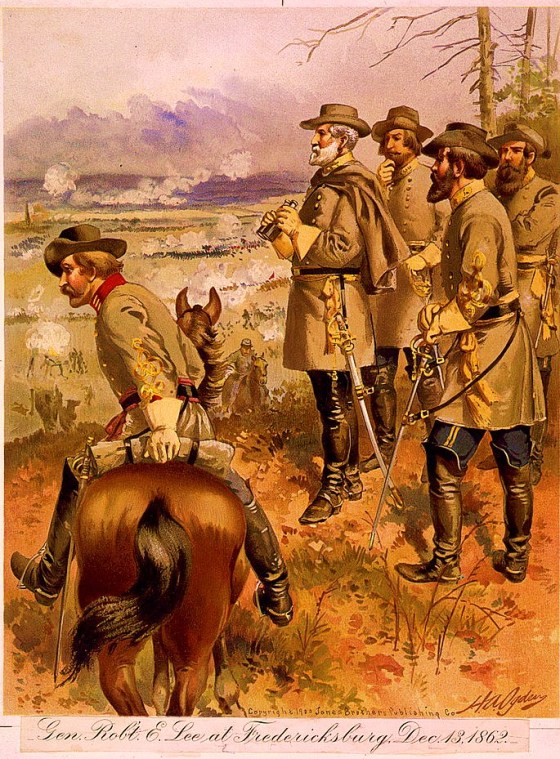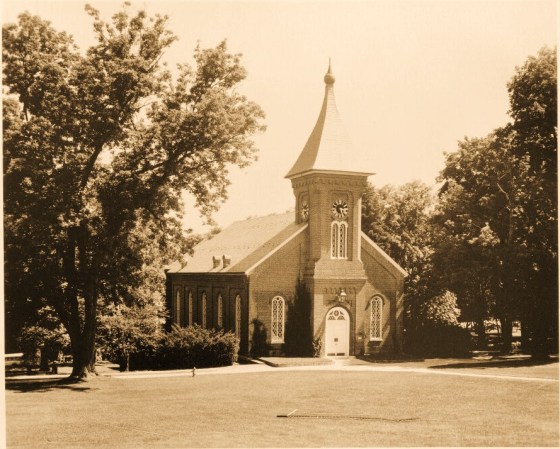 An accident – in philosophy – is an attribute of a subject which does not affect its essence. The wearing of a colonel’s uniform is a good example. Both Washington and Lee wore colonel’s uniforms during the revolutions that they participated in as a matter of honor – it was the highest rank they had achieved in a recognized military organization and they waited for the success of their revolutions prior to being granted a recognized generalcy from from an established government. This book is part of a genre of interesting books about the accidents – and probable affectations – that unite George Washington and Robert E. Lee.
An accident – in philosophy – is an attribute of a subject which does not affect its essence. The wearing of a colonel’s uniform is a good example. Both Washington and Lee wore colonel’s uniforms during the revolutions that they participated in as a matter of honor – it was the highest rank they had achieved in a recognized military organization and they waited for the success of their revolutions prior to being granted a recognized generalcy from from an established government. This book is part of a genre of interesting books about the accidents – and probable affectations – that unite George Washington and Robert E. Lee.
What is more important – and often not covered adequately – is the similarities in the essential values of these two men. The illustration above is the 1773 Christ Church, where both George Washington and Robert E. Lee once worshipped, in Alexandria, Virginia. In the more than three quarters of a century since Washington worshipped there the locus of power had shifted from what was a predominantly Anglo-Catholic mid-Atlantic and South to the mish mash of New England Protestantism that combined the worst of Calvin and Concord which had created a secularism that had no discernable theology and thus no basis for any morality as their triumph demonstrated.
By all means enjoy the comparison of the greatest man of his age [George III’s assessment of Washington] and one of the last adherents to his code but also search deeper for the true spring from which both of their values came.
While many scholars agree that Robert E. Lee’s loyalty to Virginia was the the deciding factor in his decision to join the Confederate cause, Richard McCaslin goes further to demonstrate that Lee’s true call to action was the legacy of the American Revolution viewed through his reverence for George Washington. Like Washington, Lee wore a colonel’s uniform, He rode a horse named for one of his idol’s mounts, Traveller, and carried one of Washington’s swords. On January 19, 1861, his fifty-fourth birthday, Lee sat alone in his room at Fort Mason reading the latest book about his hero as he faced the prospect of war.
In his thematic biography of the commander of the Army of Northern Virginia. McCaslin locates the sources of Lee’s devotion to Washington and shows how this bond affected his performance as a general in battle. He argues that Lee used the strategy of attrition to attempt to persuade the North to quit just as Washington had wearied the British. But reliance on Washington as a role model led to tragic irony: in the 1864 campaign it was Lee’s Confederates who became trapped like the British in the Yorktown campaign.
After his surrender. Lee could no longer emulate Washington the revolutionary, and he became the president of a small college that bore Washington’s name and surrounded himself with mementos of his hero. Challenging conventional interpretations, Mc-Caslm’s absorbing book lays to rest the argument that a posthumous “Lee cult” superimposed Washington symbolism onto Lee’s life to link it with the Revolution. Rather, Lee himself created the association, which yielded an enduring paradox: Washington earned his reputation as a statesman, whereas Lee never escaped his self-assumed image as a revolutionary in Washington’s shadow.


